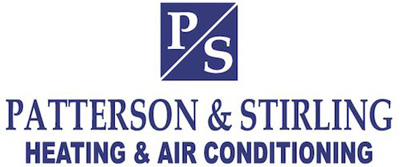Are you searching for an effortless and practical way to boost your indoor air quality at home? Whole-house air purifiers are an excellent solution for removing pollutants such as allergens, dust, mold and other dangerous particles from the air. Purification systems can also remove airborne irritants such as pet dander, mold spores and smoke, generating a healthier environment for everyone in the home. With the appropriate air purifier, you’ll have a powerful tool in your toolbox for better indoor air quality in Erie.
Let’s explore the advantages of an air purifier and why they are worth purchasing.
Are Air Purifiers Actually Helpful?
Air purifiers are highly efficient at lowering levels of airborne particles like dust, mold spores, pollen, pet dander and smoke from the air. Some units are even strong enough to eliminate very small particles, such as those from odors or viruses, from your home’s air.
There are numerous models of air purifiers to choose from, ranging from compact, standalone models to whole-house air purifiers that work in conjunction with your central HVAC system. Depending on the style, some purifiers use effective air filters while others use ultraviolet (UV) light for its sanitation properties. Some models even incorporate both for the highest air quality benefits.
What Are Air Purifiers for?
Air purifiers draw in air from the nearby environment and trap undesirable pollutants and particles as they move through a series of filters. These filters are built of fine mesh or activated carbon that is ideal for capturing dust, molds, pet dander, smoke particles, chemicals and other airborne impurities. The fan in the air purifier then forces clean air back into the ductwork for circulation.
How Do Air Purifiers Work?
Air purifiers pull in air with a fan before pushing it through one or more filters. Impurities are gradually trapped by the series of filters, and then the newly cleansed air is blown out of the purifier. Depending on its design, an air purifier may utilize electrical charges or ultraviolet light to remove additional airborne pollutants.
Other types of filtration found in air purifiers:
- High Efficiency Particulate Air (HEPA) filters: One of the most effective filter designs available, HEPA filters are developed to clean out up to 99.97% of particles from the air—as small as 0.3 microns! Keep in mind that such efficiency can also decrease airflow.
- Activated carbon filters: These filters have finely ground activated carbon, which has an electric charge able to attract things like odor particles.
- Photocatalytic oxidation: This strategy uses UV light to start a reaction that breaks down microorganisms like bacteria, mold and some viruses. With their DNA damaged, many microbes are not able to replicate and are essentially done away with.
Should I Get an Air Purifier for Dust?
Air purifiers are designed to help reduce the levels of dust in your home, providing relief from allergies and other respiratory issues caused by airborne particulate matter. By catching particles like dust in their filtration systems, air purifiers can make the air within a room or house less polluted and fresher.
If you’re looking to lessen the dust in your home, contact a certified Lennox dealer to upgrade your indoor air quality in Erie.
Do Air Purifiers Help with Allergies?
High-efficiency air purifiers are designed to capture more than 99% of pollutants and particles, which means the air you breathe in after it passes through an air purifier is considerably cleaner and healthier. This helps cut down on symptoms connected to allergies and respiratory illnesses, because it removes potential irritants from the air.
Will Air Purifiers Work on Mold and Mildew?
Air purifiers remain one of the most reliable ways to counteract mold. By trapping airborne particles and spores, they help prevent mold from becoming a health hazard in confined spaces. Additionally, many purifiers come with other features that are a way to overcome mold, such as activated carbon filters and ultraviolet (UV) lights. Activated carbon filters help remove scents and other unwelcome elements from the air, while UV lights can kill any active mold spores in the air. Together, these features allow for an extensive cleaning of the air in your home or office, which helps keep everyone protected and healthy.
Do Air Purifiers Help with Smell?
Not only do air purifiers help improve air quality by removing particles like dust, pollen, smoke and other allergens from the air, but some air purifiers also help remove any annoying aromas that might be lingering in your home.
Air purifiers use a combination of filters, including activated carbon and HEPA filters, to hold and remove odors from the air. This ensures that your home will stay smelling fresh and clean without any concern of lingering odors. By making an investment on a whole-home air purifier, you can be sure that that your home has excellent indoor air quality and smells fresh and clean all year-round.



